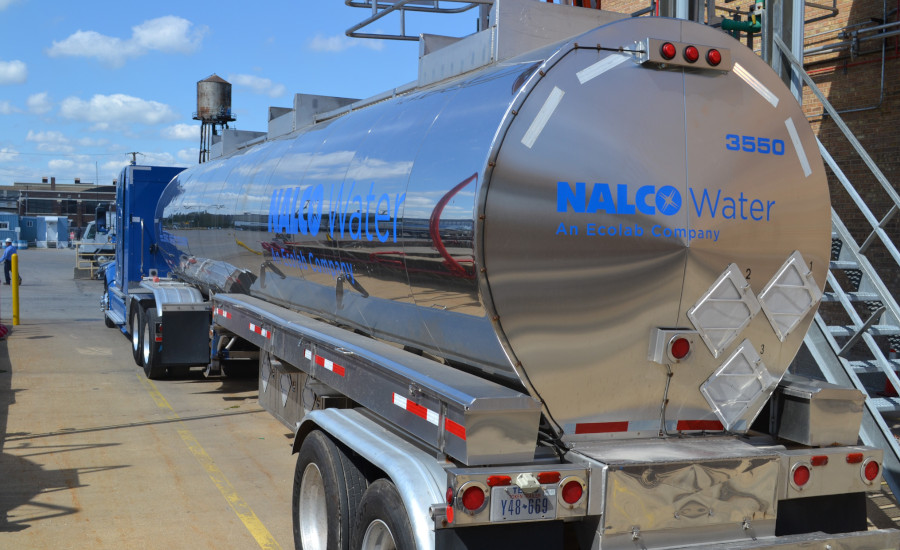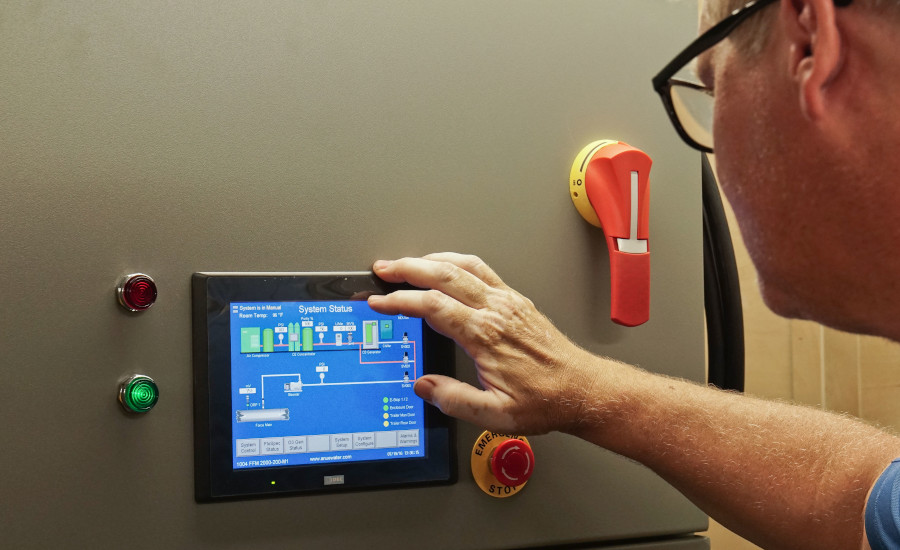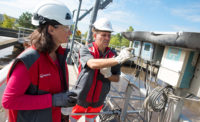Wastewater is high on the hierarchy of elements that dairy processors must control if they are to optimize operations.
By limiting water volumes in plants, enabling reuse and removing potentially harmful materials from wastewater, operators can cut processing expenses while fostering a solid reputation for being environmentally conscious, analysts note.
Key wastewater sources include clean-in-place (CIP) systems, sanitizing solutions and food waste, including milk, milk byproducts and whey. Indeed, more than 90% of organic solids in effluents come from milk and manufacturing residues. These include cheese pieces, cream, water from separation and clarification, starter cultures, yogurt, fruit concentrates and stabilizers, reports the Bethesda, Md.-based National Center for Biotechnology Information (NCBI).
Dairy effluents have high organic content and a wide pH range, which requires special purification to eliminate or reduce environmental damage, the NCBI states, noting that dairy wastewater treatments include the application of mechanical, physicochemical, and biological methods. “These effluents are in large quantities and are highly polluted, thus requiring further treatment,” the NCBI states.
Processors must consider both organic and chemical hazards when treating and disposing of wastewater, says C. Mark Hennis, president of INDCO Inc., a New Albany, Ind.-based supplier of industrial mixing equipment. Wastewater, he states, often is chemically treated and pH neutralized to meet municipal standards for drainage and may include batch or continuous process agitation in tanks or basins prior to disposal.
Reducing water use, and thus wastewater, meanwhile, can result in overall improvements to dairy operations, which includes greater equipment life and decreasing the use of cleaning chemicals, says Melinda Burn, vice president of strategic marketing for Solecta Inc., an Oceanside, Calif.-based provider of membrane technologies.
“Cleaning protocols are often done the same way, every day, regardless of the situation,” Burn notes. “Looking for ways to optimize cleaning cycles so that they are tailored to the actual conditions, and can adjust upward or downward accordingly, can ensure that one is only applying the amount of water, cleaning chemicals, and energy that is necessary to restore the system to peak operation and hygienic conditions.”
Study the big picture
Dairy processors can benefit by taking a holistic approach to wastewater handling that addresses three important factors: performance, sustainability and regulatory requirements, says Susan Oatney, wastewater technical resource manager for Nalco Water, a Naperville, Ill.-based water and process management solutions company and a unit of St. Paul, Minn.-based Ecolab.
“By combining chemistry with automation and digitally enabled monitoring tools, processors can maintain visibility across their entire water system so they can address and optimize water quality, environmental impact, and treatment program costs,” she states. The three “r’s” — reducing, reusing and recycling water — not only help processors meet growing product demand, but will help in aligning with the company’s sustainability and corporate responsibility commitments.
Wastewater reuse can be particularly efficient for utility demands, including feeding, boiling and cooling towers, says Barry Reicker, director, food and beverage, for Evoqua Water Technologies Canada Ltd., a Fredericton, New Brunswick-based provider of water and wastewater treatment solutions.
He notes that utility room use is the “low hanging fruit” as all processors have utility demands and are typically aware of the necessary specifications for boiler and cooling tower water quality. In processing plants, water use on utilities occurs far from food contact activity, “and therefore is perceived to be safe,” Reicker states.
“Reusing the water anywhere other than the utility room or truck wash presents food safety concerns,” he adds. “The utility room is the path of least resistance.”

Dairy processors, additionally, should understand their discharge limits, total volumes and peak volumes of waste leaving the plant to determine the most effective means of wastewater disposal, explains Scott Fisher, strategic business leader, food and beverage, for Kurita America, a St. Michael, Minn.-based provider of water treatment equipment, technologies, chemistries and engineering services.
Measures could range from no or limited treatment of wastewater to having a full-blown wastewater treatment plant installation, he states, noting that “there are efficiencies to be gained in each of these scenarios, but none can be completed without an understanding of the waste stream.”
Depending on the wastewater effluent discharge, processors may need to mechanically and chemically treat the waste to meet environmental and/or municipal discharge limits, Fisher says. “The worst case would be that waste treatment effectiveness does not meet the environmental limits, preventing the facility from discharging water and potentially impacting the solvency of plant production,” he states.
“Treatment systems need to handle the flow and high strength wastewater containing solids, fat, ammonia and phosphorus,” adds Dawn Bayer, product manager of water treatment for Hydrite Chemical, a Brookfield, Wis.-based chemical supplier. “Treating wastewater on-site and land spreading solids is typically more efficient than paying freight for hauling wastewater off-site or paying the raw wastewater surcharges.”

In addition to the drain on the environment, discharging wastewater with pollutant concentrations that exceed allowable limits could lead to fines/surcharges from municipalities being leveled at offending dairy processors.
An expensive endeavor
Properly managing wastewater, however, can be costly. Because wastewater from CIP systems, for instance, typically is high in process residues and cleaning chemicals, operators should invest in storing and treating the wastewater onsite before release, says Kyle Lake, product marketing manager at Baumer Ltd., a Bristol, Conn.-based supplier of sensors and measuring instruments.
“This means large capital infrastructure expenses for holding and treatment tanks, piping and pumps, and testing and treatment,” he states.
Processors can help limit wastewater expenses by reducing overall water use, which slices treatment costs, while also seeking ways to hold and lightly treat used process water for other activities, Lake says.
“The less water used on the front, the less you will have to treat at the end,” he notes. “That means not only reducing the process, CIP, and sanitary water usage, but finding a way to reuse or recycle as much water as possible.”
Processors can further cut wastewater expenses by reducing the amounts of dairy products that vanish during production, says Kerim Kollu, chief application scientist for Real Tech Inc., a Whitby, Ont.-based provider of wastewater monitoring systems. He notes that many of the organic and suspended solids loads in wastewater are from products that are “lost to the drain.”
Minimizing or eliminating product waste through leaks and spills, while enhancing rinsing and cleaning operations, also can dramatically decrease the organic strength of wastewater, leading to lower treatment expenses, he says. “This is a win-win situation as preventing product loss has an immediate monetary return, and not having to treat wastewater using expensive treatment technology and/or avoiding surcharge payments will lead to significant cost savings,” he says.
It is important too that processors receive timely alerts following the detection of spills and leaks, Kollu says. “Better and more frequent monitoring of wastewater quality can help minimize the time delay in reacting to these events and greatly reduce their impact,” he notes.
A processor’s financial circumstances will often determine how it will approach wastewater treatment, Fisher says. “Most plants want to invest in the minimum requirements, or delay investments, causing the waste treatment plant to become the bottleneck of the entire process,” he notes. “Additionally, as dairy plants expand production, the in-kind investment in the wastewater treatment process typically does not occur, again creating a bottleneck or limiting factor in waste treatment.”

Wastewater planning, Fisher says, could focus on water reuse and limiting or eliminating once through water sources, such as potable or well water, that operators use only once for cooling before dumping.
An effective system also will have the necessary storage tanks and biological treatment capabilities to enable wastewater processing to keep pace with overall plant production speeds, Lake notes.
It is vital as well to avoid possible regulatory surcharges or shutdowns by leveraging the biological treatments that can remove the necessary organics for wastewater discharge, states a spokesperson from Alar Water Treatment LLC, a Mokena, Ill.-based supplier of wastewater treatment equipment.
Look for the right fit
Processors should gear the size and design of their treatment plants to the wastewater volumes that will require handling without causing process slowdowns, the spokesperson says.
“A well thought out, fully integrated treatment system, as opposed to a series of interconnected individual unit processes, will optimize treatment efficiency, resulting in more consistent effluent quality, while minimizing the operations and maintenance burden on the plant staff,” the Alar spokesperson says.
Indeed, staffing requirements for managing an efficient wastewater system is a vital consideration as finding qualified employees, along with keeping well-trained staff from leaving for other job opportunities, can be daunting.
Providing incentives to workers for meeting treatment plant performance goals and driving cost savings initiatives can be an attractive lure, along with creating advancement opportunities for employees who obtain training certifications and reach achievement objectives, the Alar spokesperson states.
Having wastewater treatment experts manage operations is crucial for helping to prevent the surcharges, fines, and possible shutdown of a plant if processors do not meet the necessary treatment requirements, says Linda Englander Mills, vice president of sales and marketing for Clean Water Technology Inc., a Gardena, Calif.-based manufacturer of wastewater systems.
“The way processors choose to treat their wastewater has a huge impact on their sustainability values, how they are viewed by the public, how they affect the publicly owned treatment works and municipalities, and how often they can operate,” she states.



